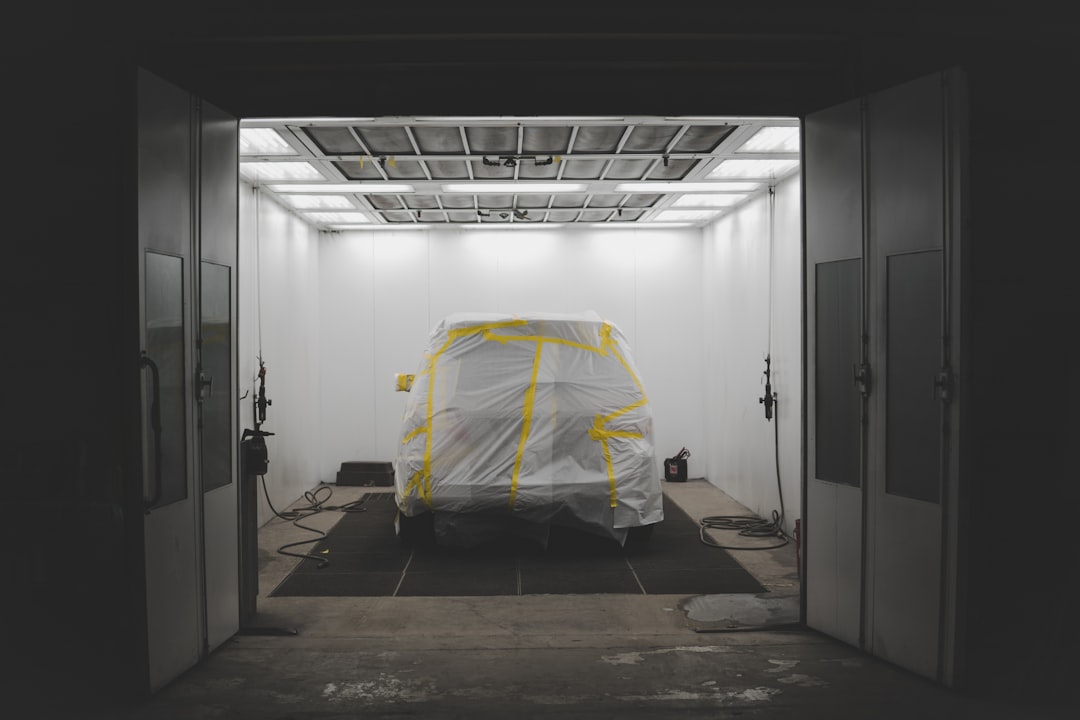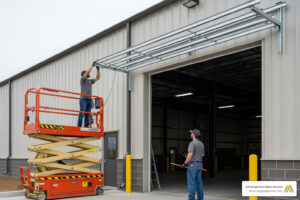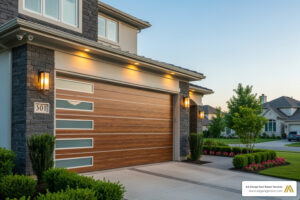Why Your Garage Door Needs a Quality Bottom Seal
Garage door rubber seal replacement is one of the most cost-effective home improvements you can make. A worn-out bottom seal creates gaps that allow cold air, dust, water, and pests to enter your garage, leading to higher energy bills and potential damage to your belongings. For homeowners seeking reliable garage door services, addressing a faulty seal is a great place to start, as this simple upgrade can make a dramatic difference.
Quick Guide to Garage Door Rubber Seal Replacement:
- Identify your seal type – T-end, U-shape, or bead-style
- Measure your door width – Most doors are 8-16 feet wide
- Choose your material – Rubber (most durable), vinyl (budget-friendly), or PVC
- Order 5-6 inches longer than your door width
- Installation time – 1-2 hours for most DIY projects
- Cost range – $3.63 to $79.95 depending on material and length
The benefits are immediate and long-lasting. A properly installed seal keeps your garage warmer in winter, cooler in summer, and free from unwanted visitors like rodents and insects. It also prevents water damage to stored items and reduces dust infiltration.
I’m David Sands, owner of AA Garage Door LLC, and I’ve been helping Minnesota and Wisconsin homeowners with garage door rubber seal replacement and repairs for over 23 years. Through thousands of service calls, I’ve seen how a quality seal replacement can transform a drafty, pest-prone garage into a well-protected space.

Why a New Garage Door Seal is a Smart Home Upgrade
A quality garage door seal is your home’s first line of defense against the elements, pests, and energy loss. When homeowners invest in garage door rubber seal replacement, they’re making a smart upgrade that pays dividends in comfort, protection, and savings.
The benefits start with energy savings. A worn seal creates gaps that let cold Minnesota winter air seep in and hot summer air infiltrate your garage. This forces your heating and cooling system to work overtime, driving up utility bills. A proper seal creates an effective barrier that can reduce energy costs significantly.
Pest prevention is another major advantage. Those tiny gaps under your garage door are like welcome mats for mice, insects, and other unwanted visitors. I’ve seen garages overrun with everything from ants to raccoons – all because of a failing bottom seal. A new seal acts as a fortress wall, keeping critters where they belong: outside.
Weatherproofing becomes critical during harsh weather seasons. Rain, snow, and wind can wreak havoc on stored belongings when they find their way through damaged seals. A quality replacement prevents water damage to tools, vehicles, holiday decorations, and anything else you store in your garage.
Beyond protection, a new seal serves as an effective debris barrier. Dust, leaves, dirt, and other outdoor mess stay outside where they belong, keeping your garage cleaner with less effort on your part.
Don’t overlook the improved curb appeal factor either. A clean, intact seal contributes to your home’s overall appearance and functionality. It’s one of those small details that makes a noticeable difference.
Signs You Need a Replacement
Your garage door usually gives clear warning signs when it’s time for a garage door rubber seal replacement. Most seals last 3-5 years, but Minnesota’s extreme weather can shorten that lifespan.
Cracks and brittleness are telltale indicators. Run your hand along the seal – it should feel flexible, not hard or crumbly. Our harsh winters and hot summers cause rubber to deteriorate faster than in milder climates.
Visible gaps are the most obvious red flag. If you can see daylight under your closed garage door, especially at corners or uneven driveway spots, your seal has failed. The “flashlight test” works great here – shine a light from inside the garage to spot problem areas.
A flattened or compressed seal can’t do its job properly. The seal should maintain its distinct T-shape or bulb profile to compress effectively against the floor. When it’s worn flat, gaps are inevitable.
Water pooling inside after rain or snow clearly indicates seal failure. If you’re finding puddles near your garage door after storms, water is sneaking past the barrier.
Drafts or temperature changes signal air leakage. Your garage shouldn’t feel like an icebox in winter or an oven in summer. Noticeable temperature differences often trace back to seal problems.
Finally, pest infestation often follows seal failure. If you’re suddenly battling more spiders, mice, or insects in your garage, check that bottom seal first. It’s amazing how many problems a simple seal replacement can solve!
Finding the Right Fit: A Guide to Seal Types and Materials
Choosing the right garage door seal for your garage door rubber seal replacement can feel overwhelming with so many options available. Think of it like shopping for winter boots – you need the right fit, the right material for your climate, and something that’ll last through our harsh Minnesota winters.
The key to a successful replacement is understanding that your garage door seal isn’t just one piece. It’s actually a rubber gasket that slides into a metal channel called a “retainer” at the bottom of your door. Getting the wrong combination is like trying to put a square peg in a round hole – frustrating and ineffective.
Choosing the Right Material for Your Garage Door Rubber Seal Replacement
When it comes to materials, you have three main options, each with its own personality. Vinyl seals are the budget-friendly choice that gets the job done for most homeowners. They’re widely available and easy to install, but they can get cranky in our sub-zero temperatures, becoming stiff and potentially cracking over time.
Rubber seals, particularly those made from EPDM (a fancy name for high-quality synthetic rubber), are the workhorses of the seal world. They stay flexible even when it’s -20°F outside and laugh off UV rays that would make vinyl seals fade and crack. For our Twin Cities climate, rubber is often the sweet spot between performance and price.
Silicone seals are the premium option – they handle extreme temperatures like champs and last the longest, but they’ll cost you more upfront. Think of them as the luxury SUV of garage door seals.
| Material Type | Durability | Cost | Weather Resistance | Notes |
|---|---|---|---|---|
| Vinyl (PVC) | Moderate | Low | Good, can stiffen in extreme cold | Affordable, common, may crack over time in harsh climates. |
| Rubber (EPDM) | High | Medium | Excellent, maintains flexibility in cold | More durable, longer-lasting, better for extreme temperatures. |
| Silicone | Very High | High | Superior, extreme temperature range | Offers the best performance, but at a higher price point. |
For most homeowners in St. Paul and the surrounding areas, we recommend going with rubber. It strikes the right balance between durability and cost, especially when you consider how hard our weather can be on garage door components.
Understanding Seal Retainers and Types
Here’s where things get a bit technical, but stick with us – understanding your seal type is crucial for a successful garage door rubber seal replacement. The easiest way to identify what you need is to pull out a small section of your existing seal or cut a piece from the end to examine the shape.
T-end seals are the most common type you’ll encounter. They have two “T” shaped ends that slide into parallel grooves in a double-channel retainer. If you’re shopping online, products like the DGSL Garage Door Seals Kit with over 11,000 reviews are typically T-end seals that work with most standard garage doors.
J-end seals look similar but have only one “J” shaped end for single-channel retainers, while bead-end seals have a small, round bead that fits into a corresponding groove. Bulb seals (sometimes called P-bulb or O-bulb) have a bulbous shape that compresses against the floor and are often specific to certain garage door brands.
U-shaped seals with retainers come as complete kits with both the seal and a new aluminum track. These are perfect if your existing retainer is damaged or if your door never had a proper seal system to begin with.
Measuring for the perfect fit is simpler than you might think. Measure your garage door’s full width from edge to edge – single doors are typically 8-10 feet wide, while double doors range from 16-20 feet. Always order your seal 5-6 inches longer than your door’s actual width. This extra length ensures a snug fit and accounts for any material shrinkage over time.
If you have an uneven garage floor (and let’s be honest, most of us do), don’t worry. Quality vinyl and rubber seals are designed to flex and conform to these irregularities. For significant gaps, consider a wider seal – they come in widths from 2½ inches up to 4½ inches to handle different situations.
The key is taking your time with measurements and identification. A few minutes spent getting this right will save you the headache of ordering the wrong part and having to start over.
A Homeowner’s Guide to Garage Door Rubber Seal Replacement
Ready to tackle your garage door rubber seal replacement? You’re in for a surprisingly satisfying DIY project! After helping thousands of homeowners in St. Paul and the Twin Cities with their garage doors over the past 23 years, I can tell you this is one of those projects that gives you a real sense of accomplishment – and immediate results.
Most homeowners can complete this project in just 1 to 2 hours. The key is having the right tools ready and taking your time – there’s no need to rush. If you run into any unexpected issues, professional help is always available to help you finish the job.
Tools and Materials You’ll Need
Before diving in, let’s gather everything you’ll need. Trust me, having all your tools within arm’s reach makes this process so much smoother – and prevents those frustrating mid-project trips to the hardware store.
Your replacement rubber seal is obviously the star of the show. Make sure it’s the correct type and about 5-6 inches longer than your door width. A sharp utility knife will be your best friend for cutting both the old and new seal cleanly.
Pliers and a flathead screwdriver are essential for removing stubborn old seals and cleaning out the retainer track. If you’re installing a new retainer, you might need a cordless drill with appropriate bits.
Here’s the secret ingredient most DIYers overlook: silicone-based lubricant or soapy water. This makes sliding that new seal into place feel like magic instead of a wrestling match. I personally prefer soapy water – it works just as well and won’t leave any residue.
Safety glasses and work gloves aren’t optional – they’re essential. You’ll also want a measuring tape for accurate cutting and a brush or shop vac to clean out all the gunk from the old seal.
The most valuable tool? An assistant! Having someone help you feed the seal through makes this job infinitely easier, especially on wider doors. Bribe them with pizza if necessary – it’s worth it.
Step-by-Step: Your Garage Door Rubber Seal Replacement Process
Let’s walk through this garage door rubber seal replacement together. I’ve refined this process through countless service calls, so you’re getting the benefit of years of experience.
Safety always comes first. Unplug your garage door opener from the wall – this isn’t negotiable. Pull the red emergency release cord to disconnect the opener, then manually lift your door to about eye level. Secure it with clamps on the track so it won’t accidentally slam down while you’re working.
Removing the old seal is often the messiest part. If you’re lucky, the old seal will slide right out from one end. More likely, you’ll need to cut it away with your utility knife. Don’t worry about being gentle with the old seal – it’s headed for the trash anyway.
Clean that retainer track thoroughly – this step makes a huge difference in how smoothly your new seal will slide in. Use your brush or shop vac to remove every bit of dirt, old rubber, and debris. Check for any bent sections in the metal channel and gently straighten them with your screwdriver.
Now comes the fun part: installing your new seal. Generously apply soapy water to the entire length of the retainer channels and the first couple feet of your new seal. This lubrication is absolutely critical.
Feed the seal into the track by folding it into a “U” shape and aligning the ends with the grooves. Start from one end and have your assistant pull gently from the other side while you guide the seal into the channel. Work slowly and steadily – if it starts to bunch up, add more soapy water and take your time.
Trim the excess once the seal is fully threaded through, leaving about half an inch of overhang on each side. Use your utility knife to make clean, straight cuts. For a professional finish, fold the last few inches of seal back on itself and tuck it into the retainer – this prevents the seal from sliding out over time.
Lower your door and test the seal by running your hand along the bottom. You should feel consistent contact with the floor and see no gaps when viewed from inside the garage. If you spot any issues, now’s the time to make adjustments.
The satisfaction of seeing that perfect, gap-free seal is worth every minute of effort. Your garage is now protected from the elements, pests, and energy loss – and you did it yourself!
Ensuring a Perfect Fit: Pro Tips and Troubleshooting
Testing your newly installed seal is just as important as the installation itself. After completing your garage door rubber seal replacement, you’ll want to make sure everything is working perfectly before calling it a job well done.
The flashlight test is our go-to method for checking seal effectiveness. Once your new seal is installed, close your garage door completely and turn off all the lights inside. If it’s daytime, you’ll easily spot any light sneaking through gaps at the bottom. For nighttime testing, have someone shine a flashlight along the outside bottom edge while you observe from inside the garage. A properly installed seal should block all light from coming through.
Sealing uneven concrete can be tricky, but it’s definitely manageable. Most garage floors have some imperfections, and a quality rubber seal is designed to conform to minor irregularities. For more significant dips or cracks in your concrete, you might need a wider seal that can better accommodate these variations. In extreme cases, adding a threshold seal directly to the floor can work alongside your door seal for complete protection.
Cold weather installation requires a bit of extra patience here in Minnesota and Wisconsin. When temperatures drop below freezing, rubber becomes stiffer and harder to work with. Bring your new seal inside for a few hours before installation to warm it up. The warmer rubber will be much more flexible and easier to slide into the retainer track. Also, work efficiently once you start – cold weather can make your soapy water lubricant less effective over time.
Common Issues During Installation
Even with careful preparation, you might encounter a few bumps along the way. Don’t worry – these issues are completely normal and easily fixable.
When your seal is difficult to slide, the culprit is usually insufficient lubrication or debris in the track. Apply more soapy water generously – don’t be shy with it! Also double-check that you’ve thoroughly cleaned the retainer channels and straightened any bent sections with a flathead screwdriver.
Seal bunching up happens when there’s uneven tension or too much friction. The key is having someone pull firmly from the opposite end while you feed the seal into the track. Think of it like threading a really long shoelace – steady, even pressure works best.
Gaps remaining after installation can have different causes. If you see a uniform gap across the entire door width, your seal might be too thin for your door, or your garage door opener’s down-travel limit needs adjustment. Check your opener manual for instructions on adjusting the close limits so the door presses down more firmly against the seal.
Wrong seal length is frustrating but fixable. If your seal is too long, simply trim the excess with a sharp utility knife, leaving about half an inch of overhang on each side. Unfortunately, if it’s too short, you’ll need to order a replacement – there’s no good way to extend a seal.
Retainer damage sometimes becomes apparent only during installation. If your old aluminum retainer is bent, cracked, or too corroded to hold the seal properly, it’s worth replacing it entirely. Many seal kits include new retainers, or you can purchase one separately.
For complex issues or if you’re not comfortable with any part of the process, professional help is always available. The experts at AA Garage Door Repair Services can handle everything from simple seal replacements to complete garage door replacement projects throughout the Twin Cities area.
Where to Buy Your Seal and What It Costs
Finding the right place to purchase your garage door rubber seal replacement materials is easier than you might think, and the investment is surprisingly affordable for the protection and energy savings you’ll gain.
Online retailers have become the go-to choice for many homeowners, and for good reason. Amazon alone offers over 1,000 different garage door bottom seal options. One standout product is the DGSL Garage Door Seals Bottom Rubber Weather Stripping Kit, which has earned over 11,458 customer reviews with an impressive 4.3-star rating. The popularity of products like this speaks to their reliability and ease of installation.
For those who prefer to see and touch products before buying, Home Depot and Lowe’s carry a solid selection of common garage door bottom seals. These big box stores are perfect when you need materials quickly or want to avoid shipping costs. The staff can often help you identify the right seal type if you bring a sample of your old seal.
Specialized garage door part suppliers offer the widest variety and most expertise. These companies focus exclusively on garage door components, so they typically stock seals for specific brands like Wayne Dalton or Overhead Door, custom lengths, and specialized materials. Many will even send you samples to ensure you’re ordering exactly what you need.
The price range for garage door bottom seals spans from $3.63 to $79.95, which might seem like a huge variation, but several factors explain this range. Material quality plays the biggest role in pricing. Budget-friendly vinyl seals sit at the lower end, while premium EPDM rubber or silicone seals command higher prices but offer superior durability and weather resistance.
Length requirements directly impact cost since materials are typically sold by the foot. A single-car garage door seal will naturally cost less than one for a double-wide door. The seal type also matters – standard T-end seals are generally less expensive than specialized profiles designed for specific door brands.
Whether you choose a complete kit (which includes the retainer, fasteners, and rubber seal) or just purchase the seal material by the foot affects your total investment. Kits offer convenience and ensure compatibility but typically cost more than buying individual components.
For our Minnesota and Wisconsin customers dealing with extreme weather conditions, we typically recommend investing in the higher-quality rubber seals. The extra cost upfront pays for itself through better performance and longer lifespan, especially during those brutal winter months we know so well.
Conclusion
Congratulations! You’ve just learned everything you need to know about garage door rubber seal replacement – from identifying the right materials to sliding that new seal into place like a pro. This simple weekend project can transform your drafty, pest-prone garage into a well-sealed, energy-efficient space that protects your belongings year-round.
The best part? You’re looking at spending anywhere from $3.63 to $79.95 on materials, and just a couple of hours of your time. Compare that to the money you’ll save on energy bills and the peace of mind knowing your garage is properly protected from Minnesota’s harsh winters and unpredictable weather.
A quality seal replacement isn’t just about keeping the cold out – it’s about creating a barrier against pests, preventing water damage, and maintaining your home’s overall efficiency. When you can see daylight under your garage door or feel that telltale draft, it’s time to take action.
Of course, not every garage door rubber seal replacement goes smoothly. Sometimes you’ll encounter bent retainers, stubborn old seals, or find that your garage door needs more extensive repairs. That’s where we come in.
At AA Garage Door Repair Services, we’ve been helping homeowners in St. Paul, MN, the Twin Cities, and Western Wisconsin tackle garage door challenges for over two decades. Whether you hit a snag during your DIY project or simply prefer to have professionals handle the job from start to finish, we’re here to help.
Our team is available 24/7 because we know garage door problems don’t wait for convenient business hours. We provide local expertise, transparent pricing, and our satisfaction guarantee. We’ll make sure your new seal creates that perfect barrier you’re looking for – no gaps, no drafts, no unwanted critters.
So go ahead, tackle that seal replacement with confidence. And if you need backup, our team is ready to provide fast, reliable service that gets the job done right the first time.









